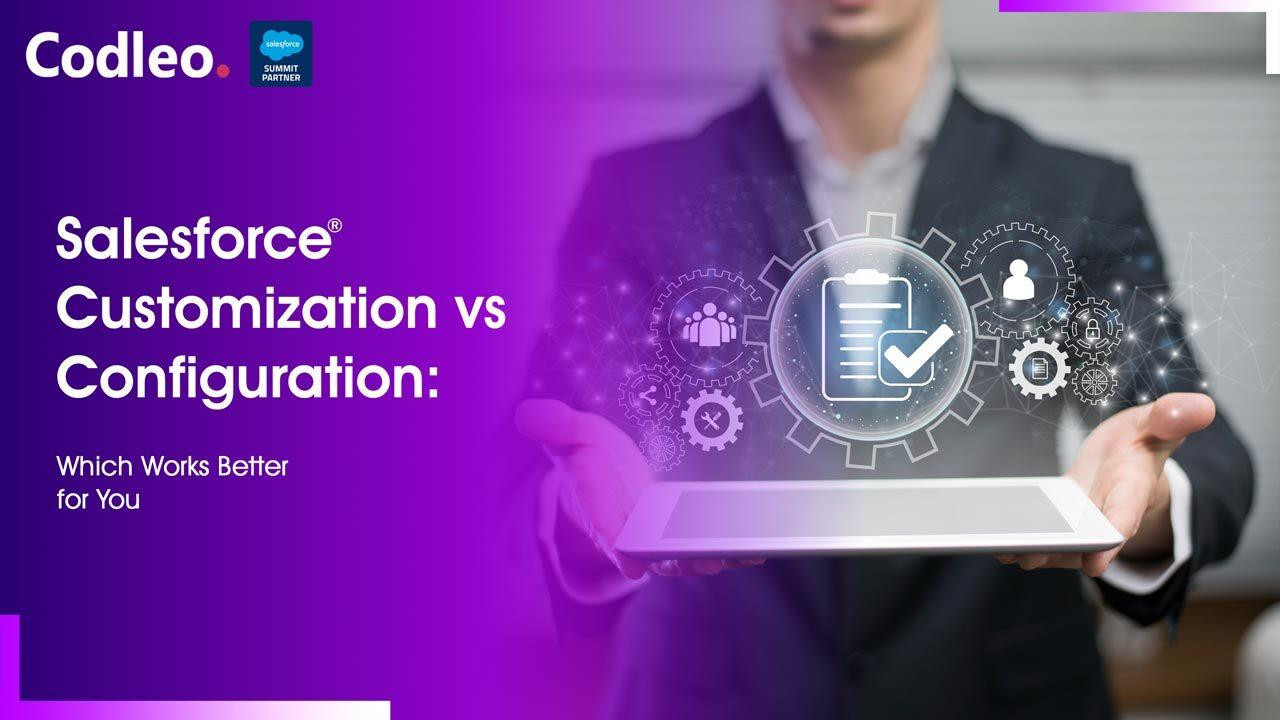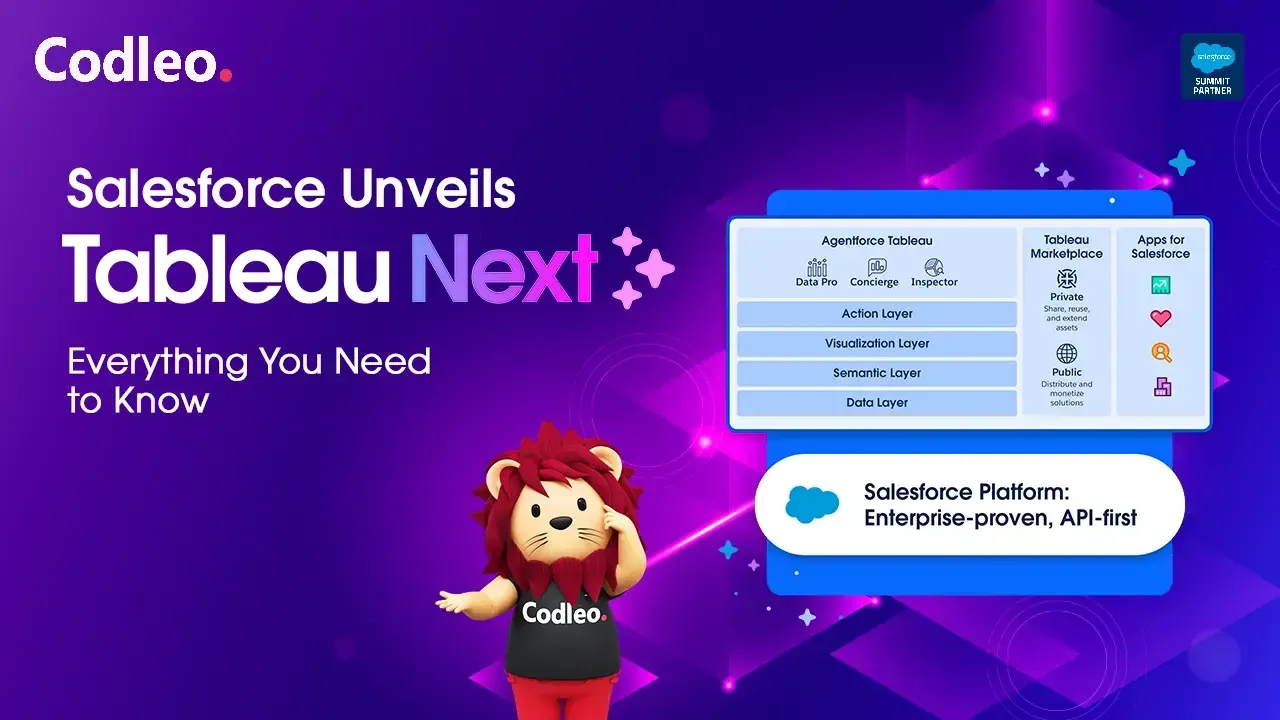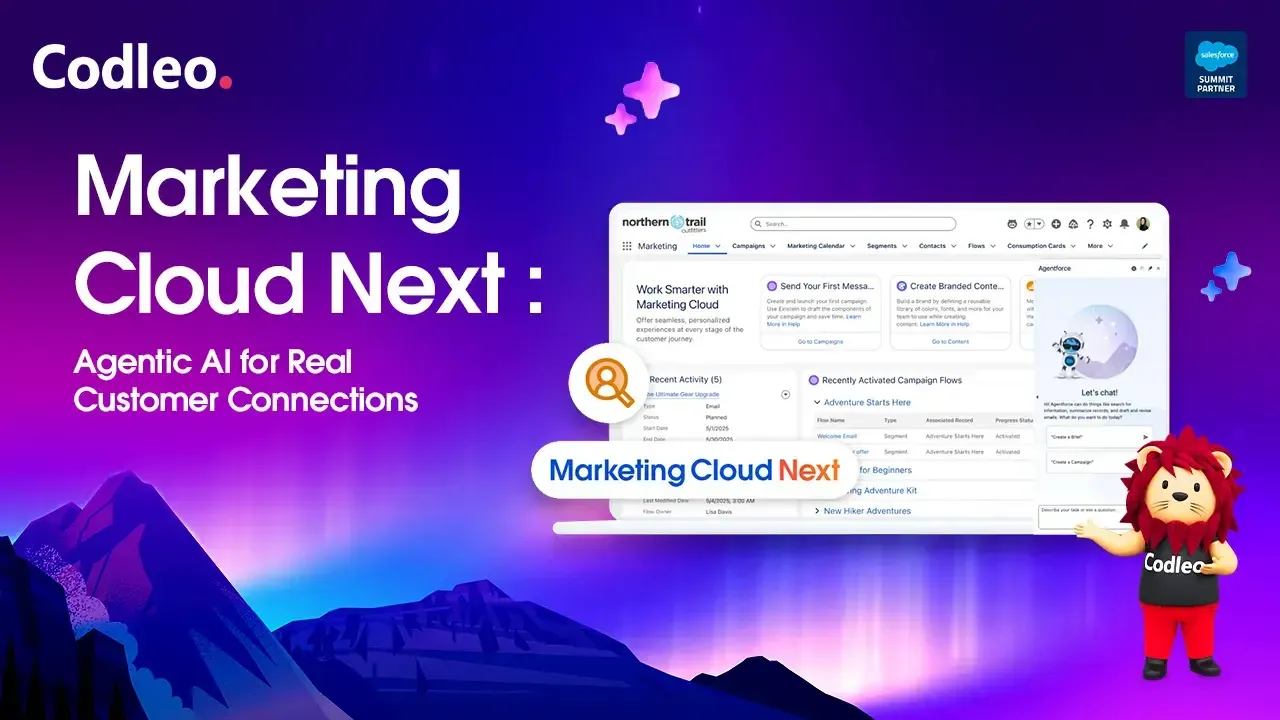Publish date:
If your company still uses Salesforce's classic version, it's time to switch to Lightning. Salesforce focuses on its improved Lightning version, so moving to it will make you more productive with the best CRM tool. This blog shares tips for a smooth migration from Salesforce Classic to Lightning, especially from experts like Codleo Consulting.
Salesforce Lightning is the next generation of Salesforce. It includes a powerful platform for quickly creating apps, an easy-to-use interface called Lightning Experience, and the AppExchange, where you can find ready-to-install solutions. Salesforce Lightning focuses on helping sales and service teams work more efficiently and effectively. By switching to Salesforce Lightning, you can improve your business and support everyone involved in running your organization.
With Lightning's easy drag-and-drop tools, developers can quickly build custom applications for their businesses. Users can set up a step-by-step sales process using tools like Path and Guidance. These features offer essential links, information, and tips at every stage, which help increase productivity and conversion rates.
Einstein Search is an AI tool that helps users find what they need quickly. Its Typeahead feature suggests search terms while users type. The Spell Correction feature fixes misspellings, so users can still get the right results even if they make mistakes. Users can narrow their search to a specific object type if they know precisely what they want.
Salesforce recently announced that new features will be available only on the Lightning Experience. This means all Salesforce users will need to switch to Lightning Experience soon to take full advantage of the Salesforce platform.
Migrating from Salesforce Classic to Lightning means moving your organization to the Lightning Experience. The Lightning Experience has a modern, user-friendly design and better features and capabilities.
Here are some Tips for a Smooth Salesforce Classic to Lightning Migration:
-
One of the most significant advantages of the Salesforce platform is its customization ability, making it very popular. Salesforce offers more customization options than other CRM tools available. This allows companies to tailor their organization to meet their specific needs. However, this makes migrating from Salesforce Classic to Lightning more complicated. To make the transition easier, it's essential to list all customizations and share them with your migration partner. They can help you find solutions and ensure a smooth move from Salesforce Classic to Lightning. Always choose the best Salesforce partner for this process.
-
Before migrating to Lightning, audit your organization. Sometimes, your organization may not perform well for various reasons, which can carry over to the Lightning version. Therefore, it is essential to conduct a thorough health check or audit. A Salesforce Classic performs this audit for the Lightning Migration partner and can take time. Be sure to allow enough time for this process. Proper planning is essential.
-
Review your customizations and features, keeping only what is necessary. Many companies fill their user interfaces with too many personalizations and unnecessary features. Conducting an audit will help identify which customizations and features should be retained. The Salesforce Classic to Lightning Migration partner does this process along with your company. This way, only relevant features are kept, preventing your system from becoming overloaded. Isn’t that a great tip?
-
Plan your migration from Salesforce Classic to Lightning carefully. If you rush, you may face problems later. To avoid this, schedule the migration during a slow work period or off-season. This way, any issues that arise will have less impact on your workflow.
-
Planning well can ensure a smooth migration. The best method is to take a step-by-step approach and address the process in phases.
-
To ensure user adoption, we need to provide support and training. Employees must be informed and prepared for the changes when moving from Salesforce Classic to Lightning. If users struggle to understand or use the new system, their productivity may decrease, and projects could get off track. We need to prevent this. Customized training sessions and support services for a specific period are essential to help end users adapt to the migration.
Classic to Lightning Migration: Step-by-step Guide For A Successful Migration
Migrating from Salesforce Classic to Lightning is challenging and needs careful planning. However, following best practices and tips can help ensure a smooth transition.
Here are some essential tips to help you with seamless Classic to Lightning migration:
Strategize and Prepare
-
Create a clear migration plan that includes timelines, key milestones, and how to allocate resources.
-
Identify key people to involve in the planning process.
-
Check if your current custom features, integrations, and AppExchange packages work with Lightning Experience.
-
Before migrating, thoroughly review your data for quality and accuracy.
Comprehend Lightning Experience
-
Learn how to use the features of the Lightning Experience interface.
-
Make the most of unique Lightning features, like Kanban view, Lightning Components, and Lightning App Builder.
-
To help users get on board, show them the benefits and features of Lightning Experience.
Do a Trial Run
-
Choose a specific department or a small group of users to participate in a test program.
-
Let them try the Lightning Experience. Ask for their feedback and let them point out any problems or possible improvements.
-
Change the migration process based on their feedback and fix any problems.
Concentrate on User Adoption
-
Tell your users why we are migrating and the benefits of the Lightning Experience.
-
Provide clear training and support to users to help them transition smoothly..
-
Ask early adopters to share their positive experiences and best practices with others.
Improve Page Layouts
-
Adjust your page layouts to take advantage of the flexibility of the Lightning App Builder.
-
Use dynamic Lightning components like Path, Related Lists, and Related Records to make users more efficient and improve their experience.
Do Extensive Testing
-
Test all your customizations, integrations, and workflows in Lightning Experience thoroughly.
-
Try different scenarios, user roles, and processes to ensure everything works properly.
-
Use Salesforce tools like the Lightning Experience Migration Assistant and the Lightning Experience Readiness Check to find potential issues.
Reiterate and Refine
-
After the migration, keep collecting user feedback and quickly fix any problems.
-
Look at how users behave and use the system to find areas that need improvement or more training.
-
Keep improving your Lightning setup based on changing business needs and user feedback.
Use Salesforce Resources
-
Use the Trailhead modules, Salesforce documentation, and webinars specific to Lightning migration.
-
Hire Salesforce partners or consultants for expert advice and support during migration.
To successfully transition from Salesforce Classic to Lightning, you need careful preparation, thorough testing, and sound change management. You can make the transition smoother by following these tips and using the available tools.
Are you planning to switch from Salesforce Classic to Lightning? Our Salesforce consulting partners can help you with this transition. To ensure a smooth migration, follow these tips: first, assess your current organization; next, evaluate what customizations you need; prepare your data; train your users; and test everything thoroughly. Reach out to our Salesforce partner to get started.
Also Read: INTRODUCTION TO SALESFORCE LIGHTNING MIGRATION AND ITS FEATURES















